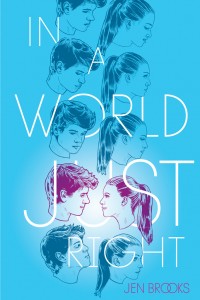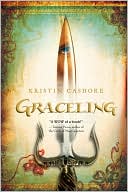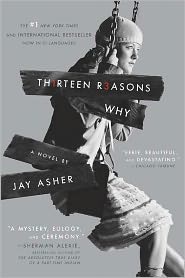Jay Asher
Books for high school kids building a classroom library
It took me way too long to discover the value of having a classroom library. I taught high school English for about ten years before it occurred to me to have one, and once I did, it made an immediate and substantial difference in my classroom. The following is a mixture of my actual experience and what I would do if I were teaching now (or will do if I go back!).
Why have a classroom library?
The curriculum at my school didn’t generally contain books my students liked, and it never contained books that were new to the market. This is because the curriculum was largely centered in The Canon, especially in the British literature class I taught, and because the administration was, to put it kindly, traditional. Also, getting approval for a book to enter the curriculum officially took time, money, and a lot of evidence of the books’ educational value, a process which is understandable, but not friendly to the latest releases.
There is some research to show that learners benefit from having a classroom library. Here are a couple of statements I found in a quick search of the web:
“‘The policy of having large classroom libraries was found to be “one of the most important differential policies between high-scoring and low-scoring countries” . . . a powerful indicator for both nine-year-olds and fourteen-year-olds.’ So says an international study by the Australian School Library Association.” Souce here.
“Research shows that students in classrooms with high-quality classroom libraries read 50 per cent more than students who do not have access to a library in the classroom.” Source here.
What books do you use to stock your library?
Probably the most important characteristic of a good classroom library is variety. I tried to stock mine with both literary and genre books (horror, fantasy, science fiction, romance, mystery, thriller). For a high school classroom, include titles that would be considered middle grade (for the less strong readers), some young adult titles (for grade-level readers and age-appropriate interest), and adult titles (because some kids prefer to read up). If you have a book that you feel kids would benefit from reading, but you think a more conservative parent might question, you can always have permission slips on hand that need to be signed before letting a student borrow a book. Or you could send a permission slip at the start of the year stating you have such books in the collection and ask parents if they wish to be notified of their child’s choices.
I found titles in a variety of places. First and foremost, I was inspired by a workshop I attended called What’s New in Young Adult Literature and How To Use It in your Program, sponsored by The Bureau of Education and Research. The workshop presenter had read hundreds of just-published MG (middle grade) and YA (young adult) books, and the workshop itself gave brief overviews of many of them with a view to who would like them and how to use them in class. I came away from the workshop with an annotated bibliography of those hundreds of books as well as notes taken from the comments of the other teachers and librarians in the room. I learned, for example, about Twilight in this setting, back when New Moon was brand new.
I found other titles on YALSA’s (Young Adult Library Services Association) website, where they publish “Best Books for Young Adults” lists by year and list a variety of awards. Some titles I got from my students themselves since every year I had at least a few kids who read a lot outside of school (I came to Robert Jordan’s Wheel of Time series this way). Some books I found from reading reviews about them in the Boston Globe or elsewhere. Some were recommendations from friends. Any place there was buzz about a book, I checked it out. I specifically remember hearing about A Bad Boy Can Be Good For A Girl by Tanya Lee Stone and thinking there’s no way my kids would have the patience to read a novel in verse. I bought it anyway, and it became the biggest must-read in my collection. In fact, one former student still has it . . .
I’ll admit I didn’t have many members of the The Canon in my classroom library because my students were getting so much of that in their regular curriculum. Looking back, I think this was a mistake. I also wish I had included more non-fiction and more non-traditional choices like graphic novels and even magazines.
Where do the books come from (i.e. how do you afford them)?
Since most school systems don’t just hand out thousands of dollars to start a classroom library, you have to find ways to afford it yourself. I created mine with my own money, which is why it probably has a higher percentage of science fiction and fantasy than it should have. I’m not rich, I just love owning new books, and so my classroom library was really a subset of my personal library that I shared with kids at school.
There are plenty of other options, however. I found this website with creative ideas for building up a library without breaking the bank. I like the Amazon.com wishlist idea because it is one way to stock your library with contemporary books. I also like the idea of inviting parents to donate a book in honor of their child because it’s something I would do if extended the invitation. The truth is there are many thrifty ways to stock a classroom library from yard sales, to donations, to public/school library supplements, to periodic exchanges with other teachers’ libraries
What do you do with a library?
One common use for a classroom library is to offer additional reading related to topics studied in class. Doing a unit on life at the turn of the 20th century? Stock Janet Fox’s Faithful. Talking about modern consumerist culture? Try Libba Bray’s Beauty Queens. Addressing the issue of suicide? How about Jay Asher’s 13 Reasons Why. Studying Huxley’s Brave New World? Give Allie Condie’s Matched a shot.
I used my library mostly as a resource for discourse about story. Some of my students took away strong messages from their reading (like with anything by Scott Westerfeld) and some simply took away the fun of having read a book. I did like that the library was part of our book review unit where we studied professional reviews as a way of experiencing real world applications for the skills English classes teach. I offered extra credit on the term grade to students who did outside reading and wrote up a detailed review. When you build your library, consider keeping a binder with reviews written by your students. Nothing is more likely to get a high school student to read than the recommendation of a peer.
Note that it’s easier for kids to choose a book if they are grouped according to interest. You can do it by difficulty: easy read/grade level read/challenging read. Or genre: romance/horror/non-fiction etc. Or some other way logical to your students.
But you have to read, too!
In my experience, the having of a classroom library is only as useful at it is part of the culture of the classroom. I like to read. I encouraged my kids to read. I designed in-class projects and extra-curricular projects where kids chose their own books, many of which came from my classroom library. Make your library books a part of what gets talked about in class, and make sure you read all (or as many as possible) of the books in your library.
At the start of each term, or more regularly if you like, take out a few books and hold them up for the class to see while you talk about their premises. Inevitably there will be a few kids who find themselves intrigued. Let the kids tell the class about books they’ve read. Make recommending good reads to others a safe and normal thing to do.
My favorite yes-teachers-read-too idea came from my friend Cynthia, who taught next door to me. She made photocopies of a sign that read “[insert teacher’s name] is reading [insert book title] by [insert author].” She laminated the signs and gave one to each teacher to post outside their classroom door. Most of the teachers in school used them, and it was really interesting for kids and teachers to walk down the halls and see what everyone else in the building was reading. Talk about building a positive book culture!
Do you have any tips for building or using a classroom library? I’d love to hear from you!
Speak up:
1 comment| TAGS:
Allie Condie, BER, classroom library, Janet Fox, Jay Asher, Libba Bray, MG, Scott Westerfeld, YA, YALSAGraceling and Thirteen Reasons Why
Have you ever read a book and thought, “That’s what I’m trying to accomplish with my writing.” I can’t recall how many times I’ve felt this way after reading a book, but I can name two times in recent memory: reading Kristin Cashore’s Graceling (which I’ve already mentioned in a previous post) and reading Jay Asher’s Thirteen Reasons Why, both YA (young adult) novels.
I can’t remember how I came across Graceling, but I think it might have been by reading Calico Reaction’s review. Graceling has a medieval-ish fantasy setting and is the story of Katsa, a young woman with a “grace” or special talent. Her grace is to kill, and her uncle, the king, forces her to be his thug by sending her against his enemies. The story follows Katsa as she rebels against her uncle and undertakes an epic journey to save the kingdoms from an evil graceling much more powerful than she. Thought-provoking questions about power, its use and abuse, pervade the story, as does the adolescent’s search for identity. Katsa must discover the true nature of her grace and make a decision on how she is going to use it. Of course, as with most good YA, there’s also a compelling love story.
I do remember how Thirteen Reasons Why came to my attention. My grad school program requires all members to read a common book for each residency. One term, the book chosen was Thirteen Reasons Why. Although I didn’t attend that particular residency, the book sounded intriguing, and I decided to pick it up. Thirteen Reasons Why is set in modern day (and is mainstream, not fantasy) and follows Clay Jensen, a high school student whose classmate, Hannah Baker, committed suicide only weeks before. He comes home one day to find a set of audiotapes in a box. He quickly learns that the tapes were recorded by Hannah before she died and are her account of the thirteen reasons why she committed suicide. Clay has received the tapes because his name is in them.
Thirteen Reasons Why is told from Clay’s point of view, but his thoughts and actions as he listens to the tapes are interwoven with Hannah’s narrative. The story is heart-wrenching, and by the end the message is abundantly clearpeople need to think about their actions and need to work on performing kindnesses because you never know how another person might be suffering. Clay, a boy most parents would love to call “son,” is a good character to illustrate the message.
As far as my writing goes, I consider both of these books inspirations. Graceling is a YA book, but it’s tone is more straight fantasy than YA and the hefty questions of power are not typical YA fodder, so it was my inspiration for the very difficult task of completing my revision of Wishstone for a YA audience. Thirteen Reasons Why gave me some confidence that I can write a novel set in modern day. Since my first novel is set in outer space thousands of years in the future and my second novel is set in ancient Greece thousands of years in the past, I was doubting I had the skills to pull off modern day YA. I didn’t think a character I would enjoy spending a novel writing would appeal to a YA audience. Sometimes I feel YA characters in books are portrayed as the adults who write YA tend to see them, rather than how they are. I’m frequently dismayed by how YA characters in other media are portrayed as caricatures. Clay Jensen, however, is a thoughtful character who, I feel, has all the appropriate reactions to what he hears on Hannah’s tapes. He felt much more real to me than any YA character I’ve encountered in a long time.
Moral of the story: my current project is a YA fantasy set in modern day. I’m sure there’ll be updates . . .


